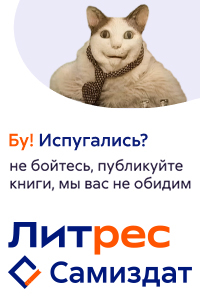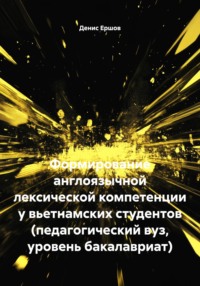
Полная версия
Английский язык. Полный курс
Exercise 5. Answer the questions.
– 1. Что такое лексикология? 2. Какие учёные внесли вклад в развитие лексикологии? 3. Какие определения слова существуют в настоящее время? 4.Кто их автор? 5. В чём отличие лексикологии от грамматики, фонетики?
(Урок №2/Lesson 2)
Charles: Classification of vowels and consonants of the English language. Vowels. Speech sounds are divided into vowels and consonants. There are 20 vowels and 24 consonants in English. An exhaled stream of air, meeting tense and close vocal cords on its way, leads them into a state of periodic oscillation, resulting in a voice or musical tone. If the air stream does not encounter a noise-forming barrier in its path, sounds called vowels are pronounced.
The characteristic timbre of a vowel is determined by the volume and shape of the oral and nasal cavities, which serve as resonators. American, English and Russian researchers of the phonetic structure of the English language have repeatedly tried to create a classification of vowels. The proposed classifications differed significantly from each other, since different initial principles were taken as the basis: the position of the lips and tongue, longitude and brevity, simple and complex structure.Depending on the stability of articulation, vowel sounds are divided into monophthongs, diphthongs and diphthongs. Monophthongs (monophthongs [«mɔnafθɔŋz]) are vowels, when pronounced, the organs of speech remain motionless, the quality of the vowel is stable. There are 10 monophthongs in English: [ɪ], [e], [æ], [υ], [ɔ], [ɔ ׃], [a: ], [a: ], [a], [ʌ].Diphthongs are vowel sounds, with the articulation of which there is a smooth transition from one mode of speech organs to another, since diphthongs consist of two elements representing one phoneme.
The first element of the diphthongs is called the nucleus, and the second is a sliding appendage or glide. The emphasis falls on the core of the diphthong. There are 8 diphthongs in English: [eı], [aı], [ɔı], [aʊ], [çə], [eə], [əə], [ʊə].Diphthongoids (diphthongoids [«dɪfθɔngɔɪdz]) are vowel sounds, during articulation of which there is minimal movement of the organs of speech from one sound to another, since the constituent parts of the diphthongoid are very similar in nature and in the method of articulation. Diphthongoids occupy an intermediate position between monophthongs and diphthongs. There are 2 diphthongs in English: [ɪ: ], [u:].Triphthongs (triphthongs [’trıfθɔŋs]) are complex vowel sounds consisting of three vowel sounds combined in one syllable. The first element of triphthongs is always stressed and is the «strongest» component, the second is the third element, while the middle sound, being the weakest component, often falls out in fast or careless speech. Some phonetists believe that sounds such as triphthongs are missing from the English language, since, in their opinion, triphthongs are a combination of diphthongs and a neutral sound.
Therefore, they are defined as a complex sound. There are five triphthongs: [auə], [aıa], [əuə], [eıa], [ɔıa]. If we classify vowels according to the position of the bulk of the tongue in the oral cavity, then they can be divided into: the vowels of the front row (fully front vowels) are [ɪ: ], [e], [æ], and the kernels of the diphthongs [eı], [eə]; the vowels of the front-retracted row (front-retracted vowels) are [ɪ] and the kernels of the diphthongs [ɪə], [au], [aı];the vowels of the mixed series (mixed vowels) are [a: ], [a] and the core of the diphthong [au]; the vowels of the back advanced row (back advanced vowels) are [υ], [ʌ] and the core of the diphthong [uə]; vowels of the back row (back vowels) – [u: ], [ɔ׃], [ɔ] [a: ] and the core of the diphthong [ɔɪ]. When pronouncing the vowels of the first and second groups, the front part of the tongue is raised towards the alveoli and the hard palate. Vowels of a mixed series are pronounced with a uniform raising of the back of the tongue. When pronouncing the vowels of the fourth and fifth groups, the back of the tongue is raised to the soft palate.
If we characterize the vowels, taking into account the vertical movement of the language, i.e. to make a classification according to the degree of elevation of the language, then it appears in the following form: high-pitched vowels (close) – [ɪ: ], [ɪ], [υ], [u: ] [üə], [uə]; The vowels of the middle rise (mid-open) are [e], [a: ], [a] [eı], [eə], [au]; low-pitched vowels (open) are [æ], [ʌ], [a: ], [ɔ], [aı], [aʊ], [ɔı]. In each of these subclasses, narrow and broad variations are distinguished: high rise – narrow version: [i: ], [u: ]; Wide variant: [ı], [ʊ] [ıə], [uə]; The average rise is a narrow variant: [e], [a: ], [ɔ: ], [a: ]; Wide version: [a] [eə]; Low rise – narrow option: [ʌ], [ɔı]; wide variant: [ᴂ], [a: ], [ɔ], [aı], [aʊ]. According to the position of the lips, all vowels are divided into: rounded, or labialized (rounded): [ɔ: ], [ɔ], [u: ], [υ]; uncirculated or non-rounded: [ɪ], [ɪ: ], [e], [æ], [a: ], [a: ], [a], [a], [ә]. The longitude (or quantitative) characteristic of vowels depends on the duration of the sound of their positional variants in speech.
The English language differs: long vowels: [i: ], [u: ]; [ɔ ׃], [a: ], [ə: ]; short vowels: [ı], [e], [ᴂ], [ɔ], [ʊ], [ʌ], [ə]. According to the degree of tension of the muscles of the speech apparatus, vowels are divided into tense (all long vowels) and unstressed (all short vowels). Diphthongs can be considered semi-stressed, because by the end of their utterance, muscle tension decreases. Each vowel sound in the IPA (International Phonetic Association) transcription system was given a corresponding number. The whole system looks like this: No.1 – [i: ], No.2 – [i], No.3 – [e], No.4 – [ᴂ], No.5 – [a: ], No.6 – [ɔ], No.7 – [ɔ: ], No.8 – [ʊ], No.9 – [u: ], No.10 – [ʌ], No.11 – [a: ], No.12 – [a], No.13 – [eı], No.14 – [aı], No.15 – [aı], No. 16 – [Aʊ], No.17 – [ɔı], No.18 – [ıə], No.19 – [eə], No.20 – [ʊə].
Exercise 6. Answer the questions.
– 1. На какие виды подразделяются звуки речи? 2. Сколько гласных и согласных в английском языке? 3. На какие группы в зависимости от стабильности артикуляции подразделяются гласные звуки? 4. Как можно классифицировать английские гласные звуки по положению основной массы языка в ротовой полости? 5. Как можно охарактеризовать гласные звуки по степени подъема языка?
Jasper: In order to improve that knowledge I’ll give you some more information about A Grammar of Modern English Usage: English parts of speech. Words of the English language may be grouped into word classes called «parts of speech» (Слова английского языка могут быть сгруппированы в классы слов, называемые «частями речи»). Each part of speech has a set of features: semantic, morphological and syntactic, typical of this particular class of words (Каждая часть речи обладает набором признаков: семантических, морфологических и синтаксических, характерных для данного конкретного класса слов). In accordance with these criteria (semantic, morphological and syntactic) English words form the following classes: the Noun: it is used to name physical objects (concrete nouns) or abstract notions (abstract nouns), the adjective, the adverb, the pronoun, the numeral, the preposition, the conjunction, the verb (В соответствии с этими критериями (семантическими, морфологическими и синтаксическими) английские слова образуют следующие классы: существительное, прилагательное, наречие, местоимение, числительное, предлог, союз, глагол).
Глаголы в английском языке могут изменяться по временам и времён много. Приведём пример одного из них– Present continuous (I am doing): We use the present continuous tense to talk about actions that are happening at the moment of speaking. For example:
– Please don’t make so much noise. I’m studying.
– Let’s go out now. It’s not raining anymore.
– Where is Margaret?
– She’s taking a bath. – (At a party) Hello Ann. Are you having a good time at the party?
Study this example situation: Ann is in her car. She is on her way to work. She is driving to work. This means: she is driving now, at the time of speaking. This is the present continuous tense.
The description of each part of speech given below is based on these above-mentioned criteria (Описание каждой части речи, приведённое ниже, основано на этих вышеупомянутых критериях).
Exercise 7. Answer the questions.
– 1. Can you tell me about the different parts of speech in English grammar? 2. What exactly are nouns, and how do they function in sentences? 3. Are there any differences between concrete and abstract nouns, and if so, what are they? 4. In terms of grammatical meaning and categorical features, how do verbs differ from nouns? 5. Could you please describe the present continuous tense in English, and when it is used?
Fluffy: Let’s continue our discussion about alligators. Here is an abstract from «Alligator» by Shelley Katz that we can read and discuss.
Prologue
Huge (огромные) chunks (куски) of flesh (мяса, плоти, тела) have been torn (были вырваны) from his leathery sides (от его кожистых боков), and his monstrous dragonlike head (чудовищная драконья голова) is riddled with (изрешечена, пронизана, испещрена) the lead (свинцом) of their shotguns (ружей) and the steel of their rifles (сталью их винтовок). But still he has survived (Но всё же он выжил). He has survived because, in some mysterious way, the people want him to (Он выжил, потому что каким-то таинственным образом этого хотят люди). He is a legend (Он – легенда). And there are very few legends left (И легенд осталось очень мало). В этом отрывке автор использует разнообразные стилистические приемы и выразительные средства, чтобы создать впечатляющий образ существа, которое одновременно вызывает страх и восхищение. Давайте рассмотрим основные элементы, использованные в тексте:
Эпитеты и прилагательные: Словосочетания «огромные куски», «чудовищная драконья голова», «кожистые бока» передают физическую мощь и ужас существа, формируя образ, который вызывает одновременно интерес и страх. Эпитеты помогают создать впечатление о том, как это существо отличается от обычных, подчеркивая его необычность и атрибуты монстра.
Метафоры: Фраза «изрешечена свинцом» подразумевает сильный удар силы человека против этого существа, что подчеркивает его стойкость и мужество. Это создает контраст между человеческим насилием и почти сверхъестественной чем-то способностью существа выживать.
Синтаксический параллелизм: Структура предложений «But still he has survived. He has survived because, in some mysterious way, the people want him to» создает ритм и подчеркивает главную идею о выживании. Этот прием усиливает акцент на последующих рассуждениях о легенде и желании людей сохранить это существо.
Ностальгический тон: Выражение «очень мало легенд осталось» создает ощущение утраты и печали, подчеркивая значимость выживания этого существа, которое олицетворяет нечто большее, чем просто биологическая форма жизни. Это разрушение историй и мифов вызывает у читателя чувство тоски по чего-то полноценному и великому.
Персонификация: Слово «легенда» воспринимается как живое существование, имеющее свои собственные желания и основные качества. Это придает отрывку глубину и обозначает, что это не просто существо, а символ чего-то важного и значимого в человеческом опыте.
Антитезис: Противопоставление между «травмами» существа и его «выживанием» создает драматичность. С одной стороны, оно изгнано, но с другой – исторически и культурно обосновано, так как желания людей сохранять этот миф подтверждают его значимость.
Краткость: Предложения выстраиваются таким образом, чтобы передать информацию лаконично. Это создает эффект immediacy, что помогает читателю быстрее войти в суть проблемы, которые обсуждаются в произведении.
В целом, этот отрывок задает тон для дальнейшего повествования, заставляя читателя задуматься о символическом значении существа и о том, почему оно осталось в сознании людей как легенда. Это одновременно вызывает любопытство и опасение, создавая богатую основу для дальнейшего развития тем в произведении.
Exercise 8. Decide whether the following sentences are true or false. If they are false, correct them.
– 1. Huge chunks of flesh have been torn from his leathery sides – False. 2.He is not a legend. 3.There are very few legends left – True. 4.Unfortunately, he has survived after being wounded – False. 5.There are five hunters who managed to kill an alligator – False. 6.His monstrous dragon-like head is riddled with lead from their shotguns and steel from their rifles – False. 7.Last Sunday, we went to the zoo to see a huge alligator described by Shelley and Paul Katz in their novel – False. 8. The people want him to appear again – False.
Azure: Recently, teachers of foreign languages have placed increasing emphasis on the fact that learning a language without knowledge of its culture is not sufficient for effective communication between representatives of different nationalities. In order to have a full-fledged conversation, it is essential to be aware of the other person’s culture, so that both parties can achieve mutual understanding.
From the perspective of cognitive science, one of the main reasons why it can be difficult for people to learn a new language is due to differences in language thinking between different cultures. Meanings in natural language are mentally encoded structures: from the point of view of American linguists, the founders of this trend (George Lakoff, Ronald Langacker, Ray Jakendorf), the meaning of an utterance is interpreted in consciousness, and is not outside of us, in the world around us, according to traditional ideas. linguistics. In this regard, the theory opposes both an ontological concept (the meaning of the word «DOG» is the totality of all dogs in the world), and a logical concept (the meaning of the word can be described by a set of general abstract semantic components), an epistemological concept (meaning is the establishment of the truth of our symbols in relation to the objective world).
According to these scientists, meaning is the interpretation by a native speaker of a certain conceptual content, the product of the interaction between the signal from the outside and the internal apparatus of thinking. Language is the conceptualization of the world, that is, the structuring of world chaos by our brain. In fact, this is a theory – a theory of understanding and using language, not its structure or functioning. J. Lakoff: linguistic meaning is a conceptual structure in the brain, «AN IMAGE is a SCHEME created as a result of interaction with the outside world: it’s a repetitive dynamic pattern of perception.» our perceptual processes and motor programs connect and structure our experience.» The CONTAINER layout is the concept of a border separating the inside from the outside. It is formed on the basis of experience: our body is a CONTAINER, and the difference between the EXTERNAL and INTERNAL matters to us. Hence the METAPHOR of expansion: we are container objects, we expand this relationship by association with other objects in our experience (MIND is a CONTAINER). Similarly– PART/WHOLE, SOURCE – PATH – GOAL.Against this background, cognitive semantics is built – an explicit, empirically grounded subjectivist, or conceptualist theory of meaning [Langacker 1990: 315], which accepts that the meaning of an expression cannot be reduced to an objective characterization of the situation described by the utterance: no less important is the angle chosen by the «conceptualizer» when considering the situation and for expressive portraying her. The full semantic characteristic of the expression is established on the basis of such factors as the level of concreteness of perception of the situation, background assumptions and expectations, the relative isolation of specific units and the choice of point of view (perspective) on the described scene.
The invariant is the prototypes (playing the role of end stops) and the terms closest to the prototypes. As a general theory of categorization, cognitive semantics is interdisciplinary, is not limited only to the linguistic aspect, and therefore comes into contact with modern epistemological concepts, especially those where the concept of intentionality is brought to the fore. It also has an anti-structuralist orientation, which brings it closer to philosophical deconstructivism (Derrida). Its basic principles:1) in the foreground are the epistemological functions of specific entities within the framework of the structure, and not the system of oppositions (as in structuralists); 2) the cognizing subject – the carrier of copulation – is an active principle that generates the meanings of expressions, and does not take them ready-made from nature; 3) the interpretations of the expression are not equal, some are more preferable already due to the properties of the language of the selected expression. The human way of conceptualizing the world leads to a significant discrepancy between the actual properties of objects of reality and how they are represented in language. This is due to the fact that a person divides the world according to his needs, and at the same time does not care at all about the scientific reliability of the data obtained by him in the practical experience of encountering things. This is especially true for the perception of space and the characteristics of objects in it. It is no accident that L. Talmi believes that the geometry of Euclid, which linguists learned at school, and related to concepts such as size, distance, length, angle, etc., is not relevant to the linguistic conceptualization of the world. In language, a person does not measure individual parameters of an object, but the entire object, referring it to one or another topological type (round, flat, elongated, shapeless objects, etc.).
At the same time, the linguistic conceptualization of the world has the ability to combine logically incompatible things. So, it turns out that objects can have «negative parts» (negative parts). The usual parts are the «added» substance, and the negative is the «taken out» of the object, cf. hole, opening and under. as negative parts of objects such as a pit, a door, a cave, etc. The same indifference to matter and substance is manifested in language when the same object receives several linguistic representations at the same time. A good example of this kind is lake – type lexemes, which actually denote capacity (cf. in a lake), but, for example, in such combinations as by lake, they completely lose their volume (thickness) and turn out to be a plane [cited by: Rachilina 1998: 285—286]. An example of how in the linguistic conceptualization of the world the same object can change its «dimension» from a two-dimensional representation to a three-dimensional one is the observations of E.V. Uryson on the meaning of the Russian word sky. The sky token designates both the airspace itself high above the ground, and the dome that visually restricts it. In other words, from the point of view of the Russian linguistic picture of the world, the sky is a three-dimensional object with a surface. This idea is partly traced in the compatibility of the sky lexeme with spatial prepositions. Cf. There are birds in the sky
The paradox of the sky lexeme is that, although it designates a certain object entirely as a «three-dimensional» one, in a number of contexts it also implements a «two-dimensional» model of this representation as part of this object. It turns out that from the point of view of the modern Russian language, the «parts» of the sky and the sky itself are equal [Uryson 230—232]. As G.I. Kustova writes, non-linguistic reality is reflected selectively by a person. He creates a specific model of the situation or scheme. The source of the word’s meaning is the situation. However, the word does not contain all the information about the situation it designates. This follows at least from the fact that the same situation can be denoted by different words. For example, members of synonymous series represent the same action in different ways, highlight and emphasize different aspects and elements of the content of the situation. A word in a certain meaning, «choosing» only a part of information from a situation, gives a certain way of conceptualizing, understanding this situation – in other words, it is a semantic model of the situation, and, like any model, emphasizes something, highlights, if you like, sticks out, and darkens something, pushes it to the background the plan or even distorts it.
Therefore, the other side of the coin is no less important – the remaining information that was not included in the «main», initial value (or in the assertive part of the value). After all, the word, being a sign of the situation, connects a person with this situation. And although the word itself contains only part of the information about the situation, it provides access to a much richer and more meaningful information structure – a data bank, so to speak. And it is also a means of «realizing» the remaining information, «extracting» it and using it in derived values [Kustova 2004: 35—38]. It is important that the conceptual structures generated in this way have a «highlighted» (more precisely, highlighted in the sign) part (accent, dominant) and there is a «shadow» part («remainder»). At the same time, the ratio of the accentuated and the «shadow» part of the conceptual structure, or scheme, of the same situation has national specifics in different languages. So, in Russian verbs with the semantics of a transport trip, the method of further action after penetration into the vehicle is emphasized (boarding the bus, even if I stand there): take the subway.
In English, the highlighted part is the zone of the causer, its active action («take’, although it does not take anything): take the metro. It is specific for the Russian language to emphasize the excessive implicit representation in the verb of being on the surface of the image of the object located there: The glass is on the table, but the book is on the table. In Western languages, it is more natural to convey the general idea of finding (There is…). Anthropocentrism literally permeates all levels of the organization of the language system and its implementation in speech. In vocabulary, as in the operational environment of direct interaction of human experience with non-linguistic reality, anthropocentrism manifests itself in the most diverse and, so to speak, everywhere. The main categories of the lexical system are deeply anthropocentric – synonymy, antonymy and mainly polysemy. G.I. Kustova writes that «the reason for the very existence of polysemy in natural language is cognitive: polysemy is one of the main means of conceptualizing new experience. A person cannot understand the new without having some kind of «given», so he is forced to use the «old» signs and adapt them to new functions, extend them to other situations» [Kustova 2004: 11]. New meanings are constantly appearing in the language, and some of them disappear before they even get into the dictionary. This means that a person has a «generative» mechanism – a SEMANTIC mechanism.The structure of this mechanism, in turn, is connected not only with the immanent laws of language as a system of signs, but also with the immanent laws of language as a system of signs. Language is a part of a person.
If the metaphor of a mechanism is applicable to it, then with clarification: it is a NATURAL mechanism. The principles of its structure and functioning are consistent with human nature – and are subject to the same laws and the same restrictions as other internal mechanisms and human information systems. Since language addresses the world and «describes» the world, the number of meanings in language, generally speaking, is not limited by anything, except for human needs and his ability to store and retrieve these meanings from memory. At the same time, ALL the meanings, of course, are DIFFERENT, since they correspond to different non-linguistic realities. Two identical values are the same value. But since language is a part of a person, the number of WAYS to form meanings cannot be infinite, and these ways cannot be «any», whatever. It is impossible to imagine that the mechanism, even if it is «natural», would work completely chaotically, without any rules, so that each new value would be created using a unique technology. This is completely contrary to the principle of simplicity, the principle of economy, and, finally, just common sense. It is more natural to assume that there is a finite (and apparently foreseeable) number of countriesTAGS for the formation of values and TYPES of values. The MODEL (type) of a value is, among other things, also a method of packaging, a cognitive model of an object or situation. And no matter how changeable and diverse the extra-linguistic reality is, a person, for obvious reasons, is forced to use a limited set of tools to master this reality. But the main reason for polysemy is cognitive: a person understands the new, undeveloped through the given, mastered and known, models new objects and situations with the help of semantic structures already available to him, «bringing» new elements of experience under the mastered models [Kustova 2004: 20—23].











